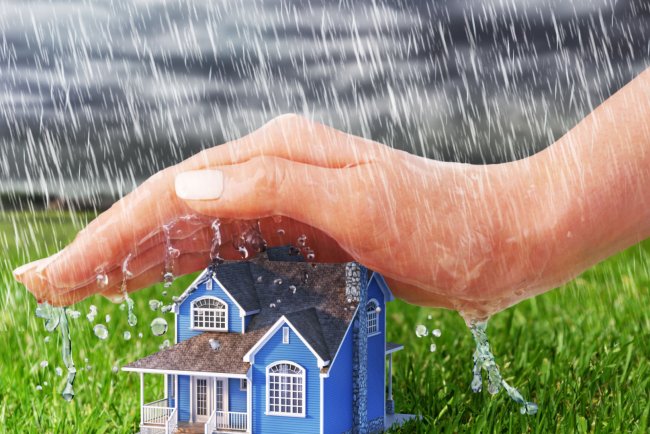How Long Do Roofs Last?
By choosing the right roofing material, performing regular maintenance, and addressing issues promptly, you can maximize the longevity of your roof and protect your home for years to come.

When it comes to maintaining the integrity and safety of a home, the roof is one of the most critical components. It provides protection from the elements, contributes to energy efficiency, and plays a significant role in the overall aesthetic of the house. One common question homeowners have is, "How long do roofs last?" The answer depends on various factors, including the type of roofing material, installation quality, climate conditions, and regular maintenance. This comprehensive guide will explore the longevity of different roofing materials, factors that affect their lifespan, and tips for maximizing your roof’s durability.
Understanding Roof Lifespan
The lifespan of a roof refers to the period during which it performs its intended function effectively without requiring major repairs or replacement. While no roof lasts forever, understanding the average lifespan of various roofing materials can help you plan for replacements or upgrades and maintain your home’s value and safety.
Types of Roofing Materials and Their Lifespans
Different roofing materials come with varying lifespans and characteristics. Here’s a detailed look at some common roofing materials and how long they typically last:
1. Asphalt Shingles
Asphalt shingles are one of the most popular roofing materials due to their affordability and ease of installation. They come in two main types: fiberglass and organic.
-
Fiberglass Shingles: These are the most common type and generally last between 20 to 30 years. They are known for their durability and resistance to fire and moisture.
-
Organic Shingles: Made with a base of recycled paper products, these shingles typically have a shorter lifespan, ranging from 15 to 20 years. They are less resistant to moisture and can deteriorate more quickly.
2. Metal Roofing
Metal roofing is known for its durability and long lifespan. It is available in several types, including:
-
Steel Roofing: Steel roofs can last 40 to 70 years, depending on the coating and maintenance. They are resistant to extreme weather conditions and are relatively low maintenance.
-
Aluminum Roofing: Aluminum roofs have a lifespan of 50 to 70 years. They are highly resistant to corrosion and are ideal for coastal areas with salty air.
-
Copper Roofing: Copper is one of the most durable roofing materials, lasting 70 to 100 years. Over time, copper develops a green patina, which acts as a protective layer.
3. Wood Shingles and Shakes
Wood shingles and shakes offer a natural look and can last 30 to 50 years. However, their lifespan is heavily influenced by climate and maintenance.
-
Wood Shingles: These are machine-cut and have a more uniform appearance. They typically last around 30 to 40 years.
-
Wood Shakes: Hand-split shakes have a more rugged appearance and can last up to 50 years. They are more resistant to wind and impact damage but require regular maintenance.
4. Slate Roofing
Slate roofing is a premium material known for its beauty and longevity. A slate roof can last 75 to 100 years or more, making it one of the longest-lasting roofing options. It is highly durable, resistant to fire, and can withstand severe weather conditions.
5. Tile Roofing
Tile roofing, made from clay or concrete, offers a distinctive look and excellent durability.
-
Clay Tiles: These tiles can last between 50 to 100 years. They are highly resistant to fire and can withstand harsh weather conditions.
-
Concrete Tiles: Concrete tiles generally last 30 to 50 years. They are less durable than clay tiles but still offer good resistance to the elements.
6. Synthetic Roofing
Synthetic roofing materials mimic the appearance of traditional materials like slate or wood but often come with longer lifespans and lower costs.
-
Synthetic Slate and Shake: These materials can last 40 to 50 years. They are made from rubber or plastic and offer a similar appearance to natural materials with added durability.
-
Synthetic Composite Shingles: These shingles can last 30 to 50 years. They are made from a mix of materials and provide good resistance to weather and fire.
Factors Affecting Roof Lifespan
Several factors influence the lifespan of a roof beyond the type of material used. Here’s a look at key factors that can impact how long your roof lasts:
1. Climate and Weather Conditions
The local climate plays a significant role in a roof’s longevity. Extreme weather conditions, such as heavy rain, snow, hail, and high winds, can accelerate wear and tear. For example:
-
Hot and Sunny Climates: Intense sunlight and high temperatures can cause asphalt shingles to deteriorate faster. Metal roofs and tiles generally perform well in such climates.
-
Cold and Snowy Climates: Snow and ice can lead to ice dams and moisture infiltration, potentially causing damage to roofing materials. Proper insulation and ventilation are crucial in these regions.
-
Coastal Areas: Saltwater and high humidity can cause corrosion and decay, particularly for metal roofs. Using materials resistant to corrosion, like aluminum, is advisable.
2. Installation Quality
The quality of installation significantly impacts a roof’s lifespan. Proper installation ensures that the roofing materials are securely attached and that the roof is properly ventilated. Poor installation can lead to problems such as leaks, premature wear, and structural damage. Always hire a reputable and experienced roofing contractor to ensure high-quality installation.
3. Maintenance and Upkeep
Regular maintenance is essential to extend the lifespan of your roof. Here are some maintenance tips:
-
Inspect Regularly: Perform visual inspections of your roof at least twice a year, preferably in spring and fall. Look for signs of damage, missing shingles, or debris accumulation.
-
Clean Gutters: Keep gutters and downspouts clean and free of debris. Clogged gutters can lead to water damage and mold growth.
-
Remove Debris: Remove leaves, branches, and other debris from the roof surface. Accumulated debris can trap moisture and cause damage.
-
Address Issues Promptly: Repair any damaged shingles, tiles, or flashing as soon as possible to prevent further issues.
4. Ventilation and Insulation
Proper ventilation and insulation help regulate temperature and moisture levels in your attic, which can impact the roof’s longevity. Inadequate ventilation can lead to heat buildup, ice dams, and condensation, all of which can damage roofing materials.
-
Install Ridge Vents and Soffit Vents: These vents help maintain airflow in the attic, reducing heat and moisture buildup.
-
Ensure Proper Insulation: Adequate insulation helps prevent heat transfer, reducing the risk of ice dams and improving energy efficiency.
Signs That Your Roof Needs Replacement
Even with proper maintenance, roofs eventually need replacement. Here are signs that your roof may need to be replaced:
-
Age: If your roof is nearing or exceeding the average lifespan for its material, it may be time for a replacement.
-
Leaks and Water Damage: Persistent leaks or water stains on ceilings and walls can indicate roof damage or failure.
-
Missing or Damaged Shingles/Tiles: Missing or cracked shingles or tiles can compromise the roof’s integrity and require replacement.
-
Granule Loss: Asphalt shingles that have lost granules may be deteriorating and losing their protective coating.
-
Sagging Roof Deck: A sagging roof deck can indicate structural issues and may require immediate attention.
Cost of Roof Replacement
The cost of roof replacement varies based on factors such as the type of material, roof size, and complexity of the job. On average, replacing a roof can range from $5,000 to $15,000 or more. Investing in high-quality materials and professional installation can provide long-term savings and ensure a durable and reliable roof.
Understanding how long roofs last is essential for homeowners to plan for maintenance and replacement. The lifespan of a roof depends on the type of material used, climate conditions, installation quality, and regular upkeep. By choosing the right roofing material, performing regular maintenance, and addressing issues promptly, you can maximize the longevity of your roof and protect your home for years to come.
If you’re unsure about the condition of your roof or need advice on replacement, consider consulting with a professional roofing contractor. They can provide a thorough inspection, recommend suitable materials, and help you make informed decisions about maintaining or replacing your roof.
FAQ: How Long Do Roofs Last?
1. What is the average lifespan of a roof?
The average lifespan of a roof varies depending on the type of roofing material. For example, asphalt shingles typically last 20 to 30 years, metal roofs can last 40 to 70 years, and slate roofs may last 75 to 100 years or more.
2. How long do asphalt shingles last?
Asphalt shingles generally last between 20 to 30 years. Fiberglass shingles tend to last longer than organic shingles, which usually have a lifespan of 15 to 20 years.
3. What factors affect the lifespan of a roof?
Several factors impact a roof’s lifespan, including the type of roofing material, climate and weather conditions, installation quality, maintenance practices, and proper ventilation and insulation.
4. How does climate impact roof longevity?
Climate plays a significant role in roof durability. For instance, hot and sunny climates can accelerate the deterioration of asphalt shingles, while cold and snowy climates can lead to ice dams and moisture damage. Coastal areas with salty air can cause corrosion, especially in metal roofs.
5. How can I extend the life of my roof?
To extend your roof’s lifespan, perform regular inspections, clean gutters and remove debris, address any damage promptly, and ensure proper ventilation and insulation. Regular maintenance is key to preventing premature wear.
6. When should I replace my roof?
Signs that your roof may need replacement include its age exceeding the average lifespan for its material, persistent leaks, missing or damaged shingles or tiles, granule loss, and a sagging roof deck.
7. What is the lifespan of metal roofing?
Metal roofing materials have varying lifespans: steel roofs can last 40 to 70 years, aluminum roofs typically last 50 to 70 years, and copper roofs can last 70 to 100 years.
8. How long do wood shingles and shakes last?
Wood shingles usually last around 30 to 40 years, while wood shakes can last up to 50 years. Their longevity is influenced by climate and maintenance.
9. How durable are slate roofs?
Slate roofs are known for their exceptional durability and can last between 75 to 100 years or more. They are highly resistant to fire and severe weather conditions.
10. What is the lifespan of tile roofing?
Clay tiles generally last 50 to 100 years, whereas concrete tiles last about 30 to 50 years. Both types offer good durability and resistance to harsh weather.
11. Are synthetic roofing materials durable?
Synthetic roofing materials, such as synthetic slate and shakes, can last between 40 to 50 years. They provide a similar appearance to traditional materials with added durability.
12. How can I tell if my roof needs repairs or replacement?
Look for signs such as missing or damaged shingles, persistent leaks, water stains on ceilings and walls, granule loss from asphalt shingles, and a sagging roof deck. Regular inspections can help identify these issues.
13. What should I do if I find an issue with my roof?
Address issues promptly by contacting a professional roofing contractor for an inspection and repairs. Timely action can prevent further damage and extend the life of your roof.
14. How much does it cost to replace a roof?
The cost of roof replacement varies depending on factors such as material type, roof size, and job complexity. On average, replacing a roof can range from $5,000 to $15,000 or more.
15. How important is professional installation for roof longevity?
Professional installation is crucial for ensuring that roofing materials are properly applied and that the roof is well-ventilated. Poor installation can lead to premature wear and structural issues.
16. Can I find roofing options that don’t use credit scores for insurance rates?
Some insurance providers offer policies that do not use credit scores to determine rates. It’s advisable to consult with insurance agents to explore options that align with your preferences.
What's Your Reaction?



















